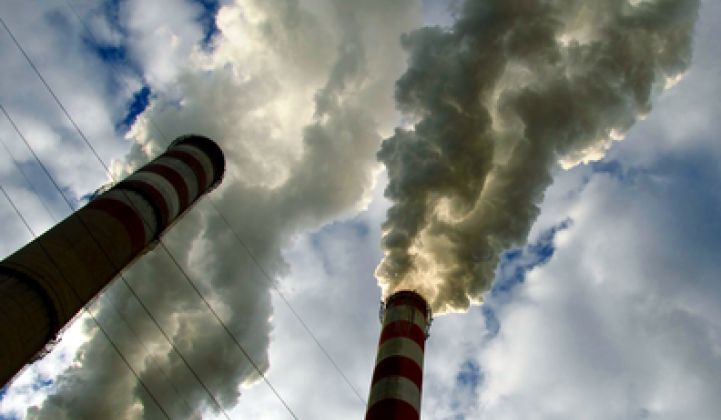When the EPA released its highly anticipated draft rule to slash carbon emissions from existing power plants in June, it signaled the beginning of a contentious, multi-year process of review and implementation -- that is, if anything ever actually gets implemented.
The proposed plan sets state-by-state emissions reduction targets for the power sector with the overarching goal of achieving a 30 percent reduction in national electricity sector emissions from 2005 levels by 2030. The rule identifies four pathways to compliance: utility efficiency programs, demand-side management, and fuel switching from coal to nuclear power and gas, as well as renewable energy adoption.
Under pressure from Congress, the Obama administration announced last month it was extending the closure date of the public comment period on the Clean Power Plan from October 16 to December 1. As comments continue to roll in (there are currently more than 1.1 million), several prominent groups weighed in last week on what they thought the rule should look like.
More than 500 solar industry leaders from hundreds of businesses, including SolarCity, SunEdison, First Solar, EnergySage and others, released a letter to the White House Thursday endorsing the EPA’s Clean Power Plan and highlighting the potential for solar energy to cut down on carbon pollution.
“As solar power installers, manufacturers, designers, aggregators, product suppliers, and consultants, we welcome the unveiling of the Clean Power Plan,” reads the letter, organized by the advocacy group Environment America.
“As the nation’s fastest-growing source of renewable energy, solar can play a major role in meeting our nation’s energy and environmental challenges,” it continues. “Solar energy already provides enough pollution-free electricity to displace 18 billion pounds of coal, and could be a game-changer in a well-crafted Clean Power Plan.”
Factoring in both utility-scale and smaller-scale projects, new solar generating capacity outstripped natural gas in the first six months of 2014. GTM Research and the Solar Energy Industries Association forecast that 6.5 gigawatts of PV will be installed in the U.S. this year, up by more than one-third compared to 2013.
Still, solar is a small piece of the United States’ energy mix today, accounting for around 1 percent of total generation. If the Clean Power Plan is implemented, the EPA projects that non-hydro renewable energy will grow from roughly 6 percent of U.S. electricity generation in 2013 to 7 percent by 2020, and then nearly double to 12 percent by 2030.
The Union of Concerned Scientists (UCS) believes the rule could go much further by taking greater advantage of increasingly cost-effective renewable energy options, in particular solar and wind. In a policy brief released last week, UCS identified seven states that are already producing more renewable electricity than the EPA took into account when developing the 2030 draft rule. Additionally, the brief notes that seventeen states have existing laws with higher renewable energy targets than are set forth under the EPA plan.
In assuming that states will meet their renewable standards among other modifications, the Clean Power Plan could nearly double the EPA’s estimate for non-hydro renewable energy penetration from 12 percent to 23 percent of U.S. electricity generation by 2030. This would also achieve deeper emissions cuts from 30 percent below 2005 levels to 40 percent over the next decade and half.
“Fortunately, renewable electricity has been growing by leaps and bounds for the past five years, and costs keep dropping. That’s great news, and the agency should take full advantage of what’s been happening on the ground," said Kenneth Kimmell, UCS’ president and former head of the Massachusetts Department of Environmental Protection, in a statement.
Some argue that the rule will give the renewable energy industry the certainty it needs as tax credits and state subsidies get phased out.
Jeffrey Holmstead, a partner at Bracewell & Giuliani who represents several major utilities, had a more conservative view on the effect 111(d) would have on renewable energy deployment. Renewable energy projects are becoming more affordable, “but a number of analyses suggest they may not be the lowest-cost way of reducing CO2 emissions,” he said.
Fuel switching from coal to natural gas is likely to play a major role in the near term. A new analysis from ICF International suggests that efficiency will start to play an increasingly important role as a compliance mechanism.
Depending on how the rule is crafted, “nationwide annual expenditures on utility energy efficiency programs could increase threefold, and the net electric system benefits from these programs could increase approximately 15 percent by 2030 solely due to their compliance value,” according to ICF. These benefits would not only reduce the cost of compliance but also electricity prices.
Holmstead said he doesn’t see utilities making any major investments based on the EPA rule, however, until there’s more certainty around whether or not it will even stay.
“I think most businesspeople and most state officials believe that there’s a pretty good chance that this rule won’t actually be implemented,” he said. “There are some significant legal vulnerabilities, and of course we won’t know until it makes its way through the courts, but it really seems to go way beyond what the statute allows the EPA to do here, certainly beyond anything they’ve done before.”
Markets & Policy

Is the EPA Too Conservative in Its Clean Energy Projections Under New Carbon Rules?
Groups are weighing in on EPA’s new plan to regulate carbon.

Is the EPA Too Conservative in Its Clean Energy Projections Under New Carbon Rules?
-
41Where Will DOE’s Loan Program Make the Next Climate Tech Investments?
-
15What the Frack Is Happening With Natural Gas Prices?
-
9With an Energy Crisis Brewing, No Peak in Sight for Emissions


